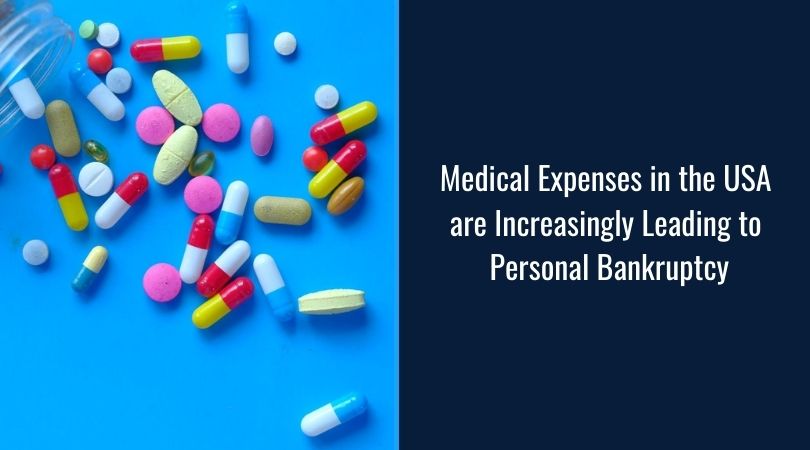Medical Expenses in the USA are Increasingly Leading to Personal Bankruptcy

According to the American Journal of Public Health, medical debt is more likely to lead to bankruptcy than home and student loan debt.
Huge medical debts have become one of the leading causes of personal bankruptcies in the United States. In a March poll by the American Journal of Public Health, nearly 60% of people admit that medical expenses “to some extent” contributed to their bankruptcy. There were more such respondents than those who cited mortgage, student loans and as the main reason.
As noted by financial experts, this “unique American phenomenon” is due to a number of factors, including a growing lack of insurance, cheap insurance and a huge number of errors in the medical billing system.
There are as many reasons for a medical debt crisis as there are diagnostic codes that govern the world of medical billing. In our interviews, half a dozen consumer advocates told they are worried that the problem will get worse as the uninsured rate rises and more people are signing up for cheaper but limited health insurance plans initiated by the Trump administration. More and more Americans are now receiving high deductible health insurance plans, many of which require patients to pay thousands before coverage begins to be paid. At the same time, medical networks are shrinking, which means that more service providers are likely to be out of the market. More and more Americans have to take out payday loans to afford medical treatment. Such loans are popular due to relaxed borrower requirements, simple online application and same-day funding. Eligibility criteria vary by state. For example, to get accepted for payday loans in Delaware online, you must be at least 18 years old, have a steady income, and have some kind of identity verification.
There have also been cases where in some states hospitals had to provide charitable care to certain low-income and uninsured patients, and instead billed such patients.
Debt collectors are trying to collect these debts by ignoring charitable aid. The patient is sometimes sued and adjudicated without ever hearing about the charitable assistance.
In 2021, hospitals provided more than $38 billion in medical care to patients who could not afford it, according to the American Hospital Association. Hospitals across the USA are looking to find ways to help underinsured and uninsured patients navigate the healthcare system. Hospitals offer charitable assistance programs, seek government assistance options to see if a patient qualifies, and offer discounts to these patients whenever possible. Every day, American hospitals treat patients who can make only small payment or not pay at all.
Despite financial assistance, about 20% of Americans have medical claims on their credit histories and, in about the same proportion, have medical bills overdue. In fact, Experian, one of the three major credit reporting agencies, reports that medical bills are the most popular cause of debt sent to collection agencies.
Dangerous trend
According to lawyers, there are more and more people who cannot afford to pay for emergency medical care and planned surgical procedures. In many cases, the hospital may be covered by the patient’s insurance, unlike individual doctors who work there, as well as the emergency hospitalization. This often results in a “balanced bill” in which patients are billed for an amount not covered by insurance.